Showing Spotlights 33 - 40 of 203 in category All (newest first):
 In the search for battery technologies that one day could replace lithium-ion batteries and meet power demands within the size and cost constraints of car makers, aerospace and other industries, researchers are exploring lithium-air batteries (LAB). Generally, to make LAB technology practical, two goals are highly important: a novel cathode that uses a highly active and stable catalysts to enhance ORR and OER kinetics; and a proper electrolyte design that can promote the solvent-based growth mechanism for the discharge products.
In the search for battery technologies that one day could replace lithium-ion batteries and meet power demands within the size and cost constraints of car makers, aerospace and other industries, researchers are exploring lithium-air batteries (LAB). Generally, to make LAB technology practical, two goals are highly important: a novel cathode that uses a highly active and stable catalysts to enhance ORR and OER kinetics; and a proper electrolyte design that can promote the solvent-based growth mechanism for the discharge products.
Dec 29th, 2020
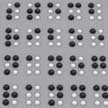 In order to make dynamic written content, for instance a news reader, available for blind or vision-impaired people, scientists have come up with various designs of sheet-type, refreshable Braille displays. Expanding the use of nanotechnologies in designing next-generation Braille readers, researchers now have successfully demonstrated a refreshable Braille display system by using a safe high-voltage power source - a triboelectric nanogenerator.
In order to make dynamic written content, for instance a news reader, available for blind or vision-impaired people, scientists have come up with various designs of sheet-type, refreshable Braille displays. Expanding the use of nanotechnologies in designing next-generation Braille readers, researchers now have successfully demonstrated a refreshable Braille display system by using a safe high-voltage power source - a triboelectric nanogenerator.
Nov 5th, 2020
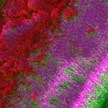 Researchers have discovered a novel 'sandwiched' silicon electrode structure that can withstand 500 cycles and deliver capacities three times larger than graphite. They used freestanding sheets made of carbon nanotubes - bucky papers - for sandwiching silicon nanoparticles. These nanotubes form a quasi-three-dimensional structure and hold silicon nanoparticles together even after 100 cycles and mitigate electrical resistance arising from breaking of particles. The sandwiched silicon anode was able to withstand discharging rates as high as 4C.
Researchers have discovered a novel 'sandwiched' silicon electrode structure that can withstand 500 cycles and deliver capacities three times larger than graphite. They used freestanding sheets made of carbon nanotubes - bucky papers - for sandwiching silicon nanoparticles. These nanotubes form a quasi-three-dimensional structure and hold silicon nanoparticles together even after 100 cycles and mitigate electrical resistance arising from breaking of particles. The sandwiched silicon anode was able to withstand discharging rates as high as 4C.
Jul 22nd, 2020
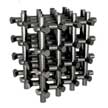 The concept of nanostructuring of battery electrodes is not new; it has been frequently employed to improve the charging speed and, in some cases, stability of Li-ion electrodes. Researchers now demonstrated 3D-interconnected Ni nanowire meshes as current collectors and structural scaffolds for building nanostructured Li-ion electrodes. This material exhibits a semi-ordered structure and is characterized by some of the highest combined porosity and surface-to-volume ratio among macroporous metals.
The concept of nanostructuring of battery electrodes is not new; it has been frequently employed to improve the charging speed and, in some cases, stability of Li-ion electrodes. Researchers now demonstrated 3D-interconnected Ni nanowire meshes as current collectors and structural scaffolds for building nanostructured Li-ion electrodes. This material exhibits a semi-ordered structure and is characterized by some of the highest combined porosity and surface-to-volume ratio among macroporous metals.
Jul 6th, 2020
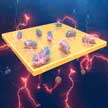 Researchers have identified the potential of using nanoscale carbon dots on bacteria for augmented bioelectricity production. They used this to demonstrate a novel method for significantly increasing the bacterial bioelectricity generation and applied it to set up microbial fuel cells. The results show that carbon dots' highly conductive carbon core not only improved overall systemic electrical conductivity but could also increase the packing density of the electron transfer path. This significantly improves the bioelectricity production of microbial fuel cells.
Researchers have identified the potential of using nanoscale carbon dots on bacteria for augmented bioelectricity production. They used this to demonstrate a novel method for significantly increasing the bacterial bioelectricity generation and applied it to set up microbial fuel cells. The results show that carbon dots' highly conductive carbon core not only improved overall systemic electrical conductivity but could also increase the packing density of the electron transfer path. This significantly improves the bioelectricity production of microbial fuel cells.
Mar 19th, 2020
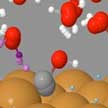 Oxygen reduction reaction (ORR), oxygen evolution reaction (OER), and hydrogen evolution reaction (HER) are among the core electrochemical processes in clean energy conversion and storage devices, such as metal-air batteries, water electrolyzers, and fuel cells. Single-atom catalysts have emerged as a new frontier of heterogeneous catalysts for these reactions due to their highly increased coverage of active sites, enhanced catalytic performance, and maximal metal utilization. By using machine learning algorithms, researchers provide a new paradigm for directly predicting the catalytic performance from physical properties of catalyst candidates.
Oxygen reduction reaction (ORR), oxygen evolution reaction (OER), and hydrogen evolution reaction (HER) are among the core electrochemical processes in clean energy conversion and storage devices, such as metal-air batteries, water electrolyzers, and fuel cells. Single-atom catalysts have emerged as a new frontier of heterogeneous catalysts for these reactions due to their highly increased coverage of active sites, enhanced catalytic performance, and maximal metal utilization. By using machine learning algorithms, researchers provide a new paradigm for directly predicting the catalytic performance from physical properties of catalyst candidates.
Feb 13th, 2020
 As an advanced fabrication technique, 3D printing has been increasingly utilized to fabricate complex 3D objects via digitally controlled deposition of phase change and reactive materials and solvent-based inks. When it comes to batteries, 3D printing has several significant advantages compared with conventional battery fabrication technologies and it opens new avenues for the rapid fabrication of 3D-structured batteries with complex architectures and high performance. In next generation futuristic 3D printed energy architectures batteries and supercapacitors could be printed in virtually any shape.
As an advanced fabrication technique, 3D printing has been increasingly utilized to fabricate complex 3D objects via digitally controlled deposition of phase change and reactive materials and solvent-based inks. When it comes to batteries, 3D printing has several significant advantages compared with conventional battery fabrication technologies and it opens new avenues for the rapid fabrication of 3D-structured batteries with complex architectures and high performance. In next generation futuristic 3D printed energy architectures batteries and supercapacitors could be printed in virtually any shape.
Nov 4th, 2019
 Ocean wave energy is an abundant resource of clean energy. However, having been explored for decades, there is still lacking efficient and economical technologies to convert water wave energy into electricity for large-scale applications Researchers have developed a new type of wave energy harvester, hierarchically structured triboelectric nanogenerator (HS-TENG), based on the triboelectric effect, targeting to harvest the huge blue energy for large-scale deployments.
Ocean wave energy is an abundant resource of clean energy. However, having been explored for decades, there is still lacking efficient and economical technologies to convert water wave energy into electricity for large-scale applications Researchers have developed a new type of wave energy harvester, hierarchically structured triboelectric nanogenerator (HS-TENG), based on the triboelectric effect, targeting to harvest the huge blue energy for large-scale deployments.
Oct 7th, 2019
 In the search for battery technologies that one day could replace lithium-ion batteries and meet power demands within the size and cost constraints of car makers, aerospace and other industries, researchers are exploring lithium-air batteries (LAB). Generally, to make LAB technology practical, two goals are highly important: a novel cathode that uses a highly active and stable catalysts to enhance ORR and OER kinetics; and a proper electrolyte design that can promote the solvent-based growth mechanism for the discharge products.
In the search for battery technologies that one day could replace lithium-ion batteries and meet power demands within the size and cost constraints of car makers, aerospace and other industries, researchers are exploring lithium-air batteries (LAB). Generally, to make LAB technology practical, two goals are highly important: a novel cathode that uses a highly active and stable catalysts to enhance ORR and OER kinetics; and a proper electrolyte design that can promote the solvent-based growth mechanism for the discharge products.
 Subscribe to our Nanotechnology Spotlight feed
Subscribe to our Nanotechnology Spotlight feed





